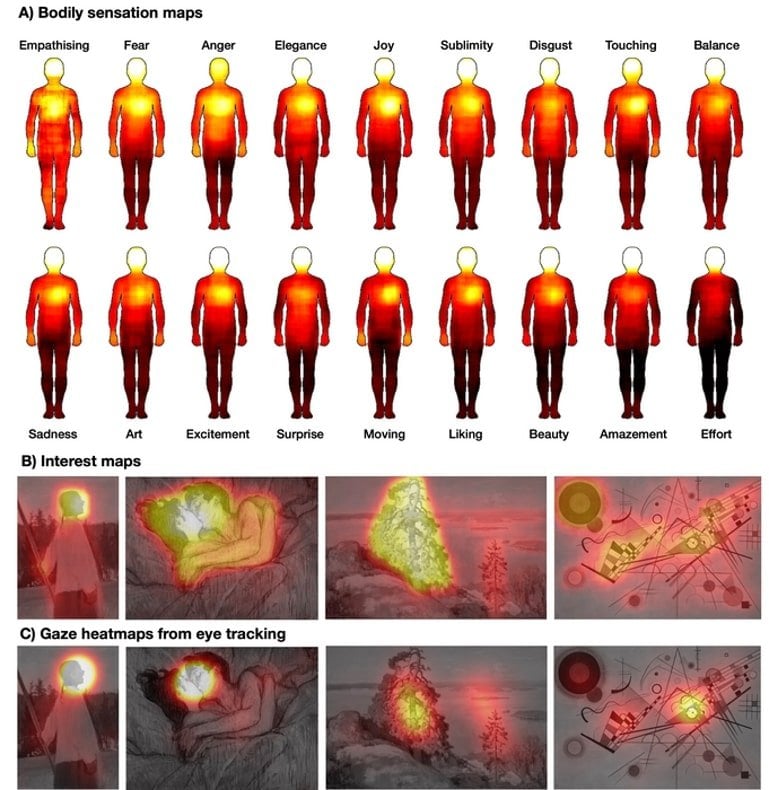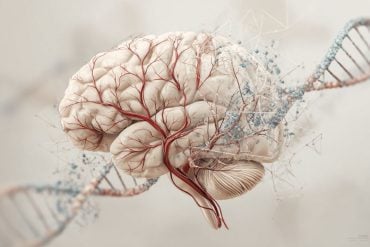Summary: A new study investigates how viewing visual art affects our emotions. The findings reveal how the aesthetic experience can impact the body’s emotional response.
Source: University of Turku
People all around the world are drawn to creating and consuming art, and human emotions are often a central subject in visual artworks as well as in music and performance art. However, the mechanisms underlying the feelings that art evokes remain poorly characterized.
A new study reveals how viewing visual art affects our emotions. The research subjects viewed different kinds of artworks and described the feelings that the art stimulated in their bodies.
The researchers recorded the subjects’ eye movement while they viewed the art. In addition, the subjects assessed what kind of emotions each piece of art evoked.
“Viewing the art evoked many different kinds of feelings and emotions in people. Even though many of the pieces handled sad or scary topics, the emotions that the people experienced were mainly positive.
“The bodily sensations evoked by art also contributed to the emotions: the stronger the body’s reaction was to the artwork, the stronger were the emotions experienced by the subject,” says Professor Lauri Nummenmaa from the Turku PET Centre at the University of Turku, Finland.

“In the artworks, human figures were the most interesting subject and were looked at the most. People have a tendency to empathise with each other’s emotions and this is probably also the case when we view human figures in art.
“The human emotions presented in art pieces can be absorbed by the viewer unnoticed, through so-called mirroring,” says Academician Riitta Hari from Aalto University.
Altogether 1,186 people from different countries participated in the study and they assessed the emotions evoked by over 300 artworks. The research was conducted with online surveys and eye movement recordings in the laboratory.
“Our results suggest that our bodies have a significant role in the aesthetic experience. Bodily sensations can draw people to art: art evokes feelings in the body, and such stimulation of the body’s pleasure centres feels pleasant to the viewer.
“This is why the emotions and bodily sensations evoked by art can be used, for example, in mental health rehabilitation and care,” Professor Nummenmaa recounts.
About this art and neuroscience research news
Author: Tuomas Koivula
Source: University of Turku
Contact: Tuomas Koivula – University of Turku
Image: The image is credited to Lauri Nummenmaa
Original Research: Open access.
“Bodily feelings and aesthetic experience of art” by Lauri Nummenmaa et al. Cognition & Emotion
Abstract
Bodily feelings and aesthetic experience of art
Humans all around the world are drawn to creating and consuming art due to its capability to evoke emotions, but the mechanisms underlying art-evoked feelings remain poorly characterised.
Here we show how embodiement contributes to emotions evoked by a large database of visual art pieces (n = 336).
In four experiments, we mapped the subjective feeling space of art-evoked emotions (n = 244), quantified “bodily fingerprints” of these emotions (n = 615), and recorded the subjects’ interest annotations (n = 306) and eye movements (n = 21) while viewing the art.
We show that art evokes a wide spectrum of feelings, and that the bodily fingerprints triggered by art are central to these feelings, especially in artworks where human figures are salient.
Altogether these results support the model that bodily sensations are central to the aesthetic experience.







